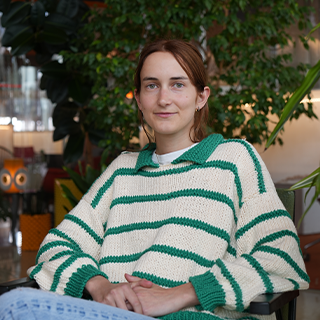High functioning depression: what are the signs and symptoms to look out for?

Depression has many faces, and high functioning depression is one of them, which can have serious consequences if not addressed and treated. While many mental illnesses are severe enough to impair a person’s ability to function. In some cases, a mental illness may be less severe, and although a person experiences symptoms, they are still able to function normally (or almost normally) most of the time.
The signs and symptoms of high functioning depression are similar to those caused by major depression but are less noticeable, which is why you should be looking out for them. Here are some clear signs and symptoms that can indicate whether you’re suffering from high functioning depression or not.
What is high functioning depression?
Depression affects all personalities and can look very different in various people. High functioning depression, officially called persistent depressive disorder (PDD), is the real deal, however it can be difficult to detect in oneself, and even more so in others.
To the outside world, a person with PDD seems completely fine but internally, that person is struggling. This can lead some to think that high functioning depression is not as ‘serious’ as major depression, but it should be diagnosed and treated, just like any other mental illness.
High functioning is not the same as fully functioning—with this type of depression there is still some impairment. When someone is able to function but still experiences significant symptoms of depression, that’s what is called PDD. Previously, this mental illness was called ‘dysthymia’ and is sometimes still referred to by that term.
What are some of the symptoms of high functioning depression?
High functioning depression is a recognised mental health condition that should be diagnosed by a psychiatrist or other mental health professional. There are certain criteria that describe the symptoms and that need to be met for a precise diagnosis to be made. Many of the symptoms are similar to those used to diagnose major depression.
An individual suffering from PDD experiences a depressed mood most days and for most of the day, for a minimum period of two years. The depressed mood must include two or more of these symptoms: lack of energy and fatigue, insomnia or oversleeping, decreased appetite or overeating, difficulty concentrating and making decisions, lowered self-esteem, and feeling sad and hopeless.
In addition to these symptoms that cause a depressed mood most of the time, there are a few other criteria that have to be met to make a diagnosis of PDD. The symptoms mentioned above must be felt on most days for at least two years without any relief from depression for longer than two months during that period, otherwise, you might just be having a rough few months.
If the individual has been through a period of mania or hypomania, an unusually euphoric and energetic mood, then this might not be PDD. You should also be careful whether these symptoms of depression aren’t better explained by a different mental illness, a medical condition, or by substance abuse.
Finally, the symptoms and depressed mood mentioned previously must cause some impairment in one or more areas of normal functioning and significant distress in the individual. Only after ‘meeting those criteria’ will you be able to confirm whether you’re suffering from high functioning depression. And even then, you may also meet criteria for major depression.
What does it feel like to live with high functioning depression?
You’re feeling down most of the time, and no matter how many times your friends and family refer to you as grumpy or gloomy, you simply can’t shake it off. When you do feel happy, it doesn’t last long. You feel tired all the time, whether you’ve slept enough or not. You’re not lazy, but people might assume so just because you can’t summon the energy needed to function normally. You manage to do everything you’re supposed to do, like go to work, keep your flat clean and force yourself to interact with others just enough, but it always seems like a monumental effort.
You feel bad about yourself, and judge the way you look or the way you behave. You gain or lose weight without meaning to, because you either have no appetite or overeat without thinking about it. You may cry without an obvious reason sometimes. At work, you do your best but focusing on a task is a real challenge. PDD can result in substance abuse, chronic pain, relationship difficulties, and problems at work or school.
Can high functioning depression be treated?
Trust me, it can. While PDD may not be as severe or debilitating as major depression, no one should have to live with a constant low mood when effective treatments are available. First things first, you’ll need to get a diagnosis before even thinking about medication. As easy as that sounds, realising that your symptoms are actually clear signs of a mental illness is the hardest part. PDD hides behind your ability to function. That’s exactly when loved ones need to guide and support you, they could have the highest chance in recognising that something is wrong.
Once diagnosed, high functioning depression can be treated with a combination of therapy and medications. Antidepressants can help but they can take several weeks to work, and beware of their side effects. This means that you might have to try a few different types to find a medication that works best for you.
Therapy is also a major help when treating PDD. By teaching you ways to recognise negative patterns in your thoughts and actively change them, therapy can be the first step towards ‘recovery’ in many cases.
Getting help is essential, because treatment (both through therapy and sometimes medication) can make your life more enjoyable, improve your mood and your functioning. It can bring you a better quality of life. Battling with a mental health condition is often done internally, but that doesn’t mean you shouldn’t reach out for external help, it’s there for you.





